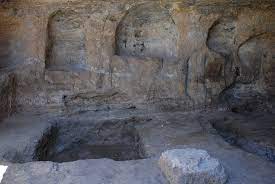by Assoc.Prof Dr. Aytaç Coşkun
© Copyright photo by Assoc.Prof Dr. Aytaç Coşkun
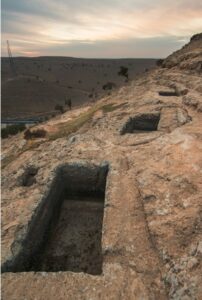
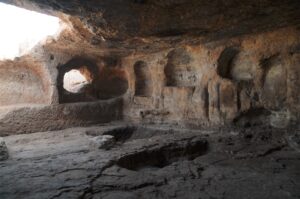
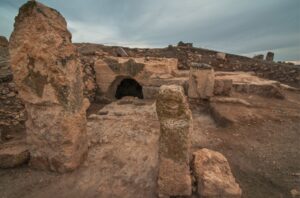
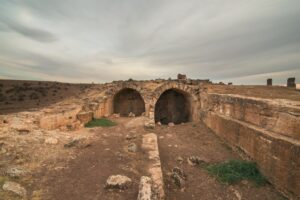
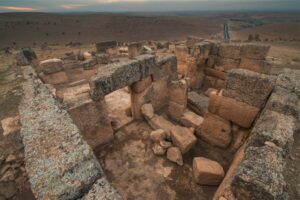
2nd-3th century AD
Mithraeum was carved into the main rock, nearly in the north of the Zerzevan Castle. On the eastern wall of the structure, there are columns carved into the main rock , two large niches in the middle and two small niches on both sides. Paint residues can be seen on the belt rising above the two columns around the big niche in the middle. Probably on the aforesaid belt there were symbols belonging to Mithras religion. The plaque on which Mithras’ sacrificing the bull scene was carved, was also placed in the big niche in the middle. The crown beam motif as one of the symbols of Mithras is carved on the eastern wall. In one of the small niches there is a rather smoothly carved water or blood bowl and a pool on the ground right in front of it.
The water or blood bowl and the pool are connected to each other with a channel through the wall and it is known that water or blood was used in the Mithras religious ceremonies. In addition there are four symmetrical points on the ceiling for hanging the animals during the ceremonies. The hanging points must have been used to sacrificial rite in Mithras rituals. The structure is the first and only Mithras temple to be found on the eastern border of the Roman Empire. At the entrance gate of the structure, the inscriptions and symbols are clearly visible.
The god Mithras, of Persian origin, is the god of concepts of “agreement and friendship”, which means “mediating”. Mithras is the god of the sun and the cult is based on worshipping the sun. It is alo the symbol of light, war, justice and faith. In the 2 nd and 3 rd centuries AD, it became rather common in the Roman Empire. In the 4th century AD, it was banned with the spread of Christianity.
The Mithraism mystery religion was quite common especially among the soldiers, merchants and aristocrats in all the lands where the Roman rule was dominant. Its teaching is about the creation of the world and is also known as the god who controls the universe. The religious ceremonies were secret and closed to the outside. The person to participate in Mithras religion had to draw twelve persecutions. The members of this religion to which only men are accepted had to go through seven stages. The ceremonies were held underground in caves or temples.

